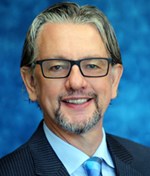B Minus – Must Try Harder: Some Thoughts on the Current State of the Art in Unconventional Play and Reservoir Evaluation
Andy Pepper, Director, This is Petroleum Systems LLC
Wednesday, 28 July 2021, 12:15 p.m.–1:30 p.m. | Houston, Texas
Course Content
Geologists working unconventional plays can often be heard complaining that engineers 'just don't want to listen to us’ or that they ‘just want to mow it down’ without consideration of changing geologic factors. Engineers on the other hand are faced with the task of ‘getting it done’ and understandably are looking to find practical and helpful results from geoscience workflows. Geoscience workflows in unconventional play and reservoir evaluation originated almost 2 decades ago in the laboratories - the first point of contact with the rock involving measurements from core. Evaluation ‘checklists’ reflected the measurements made in the laboratory - such as organic carbon content; rather than those important to determining oil in place, recovery, and flow rate - such as viscosity. Assertions that the gas saturation could be derived as (1-water saturation) would later be found to be flawed. The primary role of a commercial geochemical laboratory is not to derive new interpretation methods, and old interpretation schemes from the late 70’s and 80’s were exhumed; and these largely remain the frame of reference that results are presented in today. The result: our ongoing insights of shale geochemistry is through a foggy 40-year-old lens - perhaps the most unfortunate bad habit being the use of vitrinite reflectance as a frame of reference in rocks where vitrinite is scarce or absent.
As the liquids plays emerged in the last decade, core laboratories’ protocols scrambled to adapt from the dry gas methods, but without recognizing the importance of processes such as organic absorption on deriving more considered saturations - what is vaporizable or solvent-extractable is not necessarily in the reservoir fluid phase in the rock! Landing zones in mature plays seem to be resistive to challenge, even though new saturation methods can show sweet spots in different parts of the reservoir. Are we just waiting for the oil price to save us again; or are we willing to try further optimization? Some larger OilCo’s leveraged the use of ‘modern’ petrophysical and fluid modeling approaches to provide engineers with maps showing quantitative GOR (considering reservoir storage that drives ‘cumulative' vs 'instantaneous’ fluid capture), pressure and viscosity; but public exposition of these workflows has been relatively recent. These workflows allow a relatively small number of expensive well datasets to be rapidly and inexpensively extrapolated and interpolated in the early to mid-stage of development.
We must try harder! - this talk aims to provide some pointers on why and how.
- Time:
- 12:15 pm–1:30 pm
- Location:
- In-Person – George R. Brown Convention Center, Room 382
- Fee:
- $65
Bio
 This year, Andy Pepper will celebrate 40 years experience as a geologist, petroleum systems analyst and leader: including at BP as Network Leader for Petroleum Systems; at Hess as Chief Geologist and then Director of Conventional and Unconventional New Ventures; and at BHP as VP Geoscience and VP Unconventional Exploration. He founded This is Petroleum Systems LLC in 2015 as a vehicle to collaborate and innovate in Petroleum Systems concepts, modeling and training.
This year, Andy Pepper will celebrate 40 years experience as a geologist, petroleum systems analyst and leader: including at BP as Network Leader for Petroleum Systems; at Hess as Chief Geologist and then Director of Conventional and Unconventional New Ventures; and at BHP as VP Geoscience and VP Unconventional Exploration. He founded This is Petroleum Systems LLC in 2015 as a vehicle to collaborate and innovate in Petroleum Systems concepts, modeling and training.
Venue

George R. Brown Convention Center
1001 Avenida De Las Americas
Houston,
Texas
77010
United States
(713) 853-8000